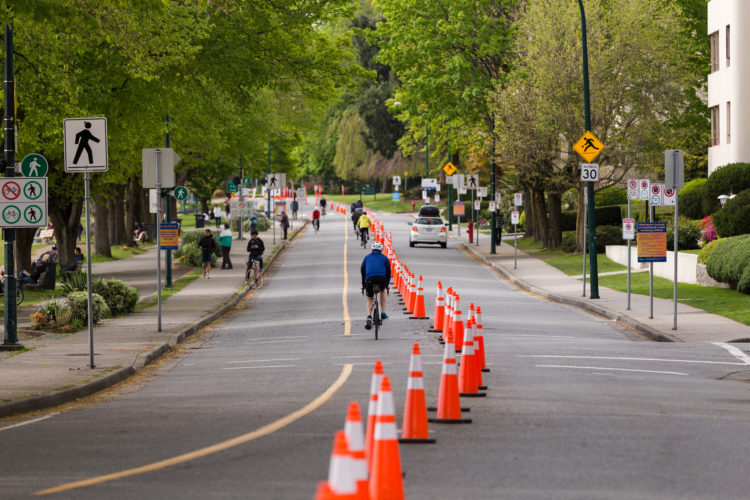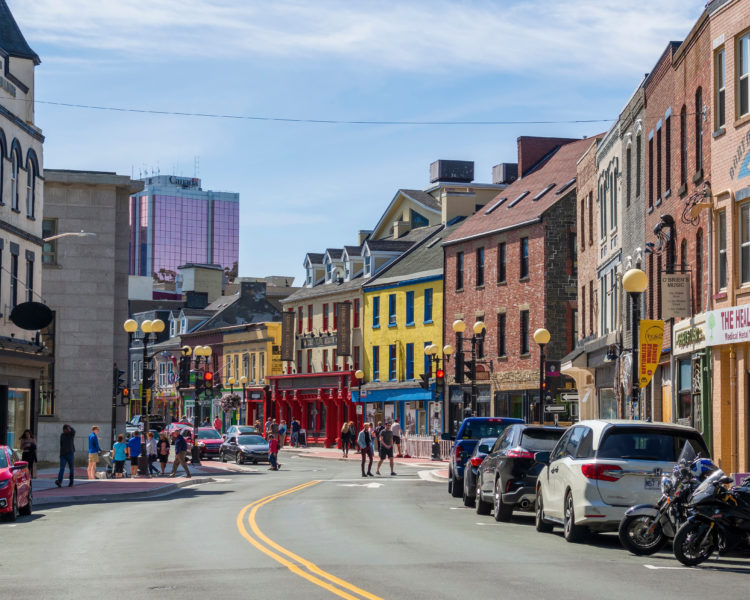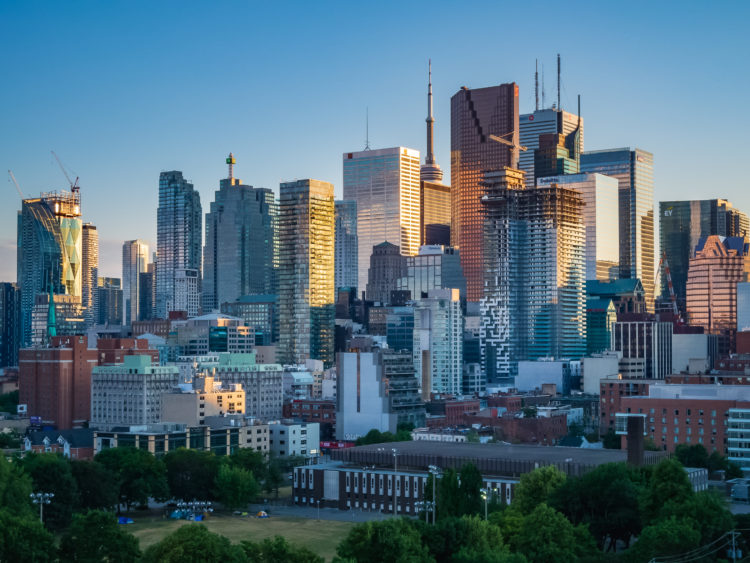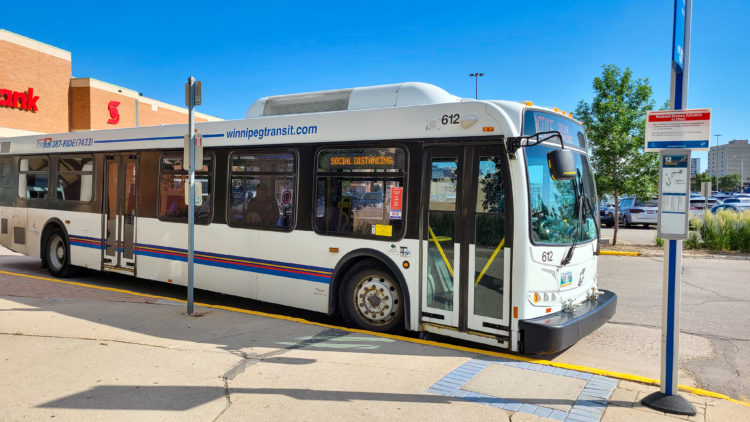
When the global pandemic was declared and the first lockdowns rippled around the world, office towers emptied, visitors disappeared and affluent white-collar urban dwellers, enabled to work from “home” via Zoom, decamped to weekend properties. It wasn’t long before the cry began: the city is dead!
While the city is not dead, it has certainly been hobbled by the effects of a pandemic. As we grapple with how our lives and our work have changed because of COVID, governments are making unprecedented investments to restore our economy and “build back better.” As we reimagine our cities and our downtown cores, now is the time to rebuild our urban environment in ways that will benefit everyone and will withstand the next pandemic.
COVID hit rural communities as well, but it fundamentally clobbered our cities, where most Canadians live and work. One of the most urbanized countries in the world, Canada has a relatively small population of 38 million people distributed across a vast geography, but half of our population lives in the largest 25 cities. Cities drive the Canadian economy, foster every kind of innovation and incubate all sorts of wonderful things, not just viruses.
We rely on our cities’ main streets – including those that anchor our central business districts and downtowns – for employment, cultural expression, athletic diversions, research to advance us as a society and access to financial and human capital.
Among six big Census Metropolitan Areas (CMAs) – Vancouver, Calgary, Edmonton, Ottawa, Toronto and Montreal – downtowns cover only 0.1 per cent to 0.3 per cent of the land area, but they generate between 15 per cent and 24 per cent of jobs, and between 13 per cent and 24 per cent of gross domestic product (GDP). Indeed, eight of Canada’s large CMAs account for 55 per cent of our GDP.
Through the pandemic, Canada’s largest cities have each experienced extraordinary challenges as commercial workers and tourists vanished, restaurants and cultural institutions closed to visitors and residents went online for the services they needed. It gutted the tax base that fuels municipal governments to provide all the services that make our lives work. Commercial office towers in Canada’s economic centres have stayed empty as workers continue to work from home, and if you live in a capital, it’s not clear to what extent government workers will return to their offices in 2021.
No foot traffic, no commerce, no taxes: It all equals no downtown.
In cities depending on business or recreational tourism, downtown hotels are now operating at less than 10 per cent occupancy and have been for more than a year. Cultural and recreational attractions and special festivals – think Caribana Toronto, the Canadian Tulip Festival and the Edmonton Fringe – have done well to pivot to online programming, but gone is all the adjacent revenue for local bars and restaurants.
In the midst of lockdowns across the country, governments at all three levels have taken bold steps that would have been near impossible to rapidly implement pre-pandemic: sidewalk and patio expansions, repurposing of roads, major realignment of services, widespread property tax deferrals and other financial support measures. In their downtowns, local governments and business improvement organizations developed comprehensive strategies that ranged from proceeding with immersive cultural installations to encourage people to return to their downtowns, while at the same time providing business support staff with de-escalation training to ensure public safety and inclusion of diverse populations using streets.

But simply restoring main streets and downtowns to what they were before COVID-19 cannot be the sole objective of this work. The pandemic has graphically exposed the vulnerabilities of racialized communities, especially Black and Indigenous peoples, as well as lower-income communities and other people bearing the brunt of systemic inequities.
As Canadians were urged to “stay at home,” thousands who had no home to go to before the pandemic were placed at even greater risk as shelters and community supports were stretched to the max. Critical dialogues amplified throughout the last year have focused on the degree to which Canada’s municipal systems have fostered inequality, spatially reinforced by how we plan, design, resource and manage our cities.
Local coping strategies in response to lockdowns and restricted travel only made these pre-existing gaps in services and amenities all the more glaring. So-called “leafy” neighbourhoods saw the introduction of “quiet streets” such as traffic calming and speed limit reductions to encourage outdoor respite far earlier than those neighbourhoods where COVID cases were much higher.
Neighbourhoods with higher density populations, often with essential workers employed in lower waged jobs and with longer commute times, lacked the necessary targeted interventions. Things like workplace testing and vaccine pop-ups needed to contain the virus and support essential workers were not introduced early enough. Similarly, resources for programming that could have enabled lower income neighbourhoods to also benefit from safe outdoor spaces were lacking, and the pre-existing gap in facilities for recreation and connectivity was exposed.
As we come out of the crisis, we are going to need bold, purposeful action across urban Canada to recover what was working before but, more importantly, to address what wasn’t. Farhood Manjoo suggested recently in The New York Times: “The coronavirus does not have to kill cities – just our old idea of what cities were, how they worked, and who they were for.”
Since the start of the pandemic, the Canadian Urban Institute (CUI) has engaged the diverse constituencies that contribute to building cities in Canada: local governments, community advocates, academics and applied researchers, business and civic leaders, to watch, share and learn from this crisis.
Reaching thousands of Canadians in every province and territory, CUI has commissioned research, convened senior officials to problem solve and initiated campaigns focusing on recovery strategies and investments where we know there will be a significant impact on people’s lives and livelihoods. In the spring of 2020, we built a large coalition of partners from community, business and government to Bring Back Main Street (BBMS). And in early in 2021, we launched the second phase of that work, focused on downtowns, to Restore the Core.

Priorities we have heard from city builders across Canada:
We need local data. Urban scholar and CUI senior fellow Kate Graham worked with pollster Gary Offenberger at Advanis to expose the great Canadian data gap. There is an absence of local data to help pinpoint where the fallout from COVID has been most acute. In the CUI’s COVID Signpost series, a national urban snapshot was taken every 100 days since the pandemic was declared, exploring what’s working, what’s not and what’s next for urban Canada.
We know what gets measured gets done. Even 14 months in, we still lack the granular data needed to inform targeted interventions to stem this pandemic or plan for the next. For example, which kinds of housing are most vulnerable to airborne transmission? What should be the role of micro-transit to get essential workers to their jobs more safely? How can land use and planning be amended in higher-density neighbourhoods to make sheltering in place a safe, viable alternative for multi-generational households?
We need main streets that serve everyone. Main streets are our community hubs and are about a lot more than commerce. They attract diverse people that ensure our neighbourhoods are safe and vibrant. They are places where you bump into your neighbours, borrow a book, quench your thirst, take a class, use a bank machine, visit a health clinic, go skating, worship and now, get your COVID vaccine. Main streets employ thousands of Canadian residents in small businesses while housing equal numbers of people in generally affordable homes above and behind the shops. Main streets must be the backbone of Canada’s recovery, which must be nurtured, block by block.

Our downtowns need more diverse uses. The challenges facing our downtowns predate COVID and have been exacerbated by it. These neighbourhoods had become monocultures, heavily dominated by one type of user: the office worker. To ensure their survivability, we need them to become more complete neighborhoods, with a mix of uses and users.
The world’s most enduring downtowns – think Rome, Tokyo, New York – are remarkable places. They house workers and residents, they incubate artists and new businesses in small, tucked away spaces, as well as make room for spectacles and once-in-a-lifetime experiences. But that mix is the result of strategic investment and enabling policy. After 9/11, planners at the city of New York chose, despite much skepticism, introduced more mixed uses to Lower Manhattan. Non-profits and small-scale developers stepped in, and 15 years later, a resilient neighbourhood of shops, cafés, apartments and co-working spaces has replaced those static office building forms and corporate culture.
Community-led planning and problem solving has the power to transform our cities, by ensuring equitable access to jobs, cultural life and public amenities. The Canada Healthy Communities Initiative (CHCI), a $31-million federal program to build better connectivity and public places to improve quality of life for people across the country, recently generated more than 3,000 applications from local organizations and municipalities proposing place-making projects that engage the community directly in reimagining and reinventing public spaces that meet their local needs and support economic recovery, create jobs, and build vibrant, resilient communities. CHCI is proving the point that communities know best the kinds of infrastructure they need and can forge the partnerships needed to create it.

Finally, we need a devolution of authority and resources to local governments so that all policy is tailor-made from the ground up and can be locally implemented. Yes, there are obstacles to realizing this, but surely a global pandemic will convince us that we must tackle problems and foster solutions where they can be spotted and fixed quickly: at the local level. Need more supportive housing? Need more flexible zoning? Need regional alignment on investment priorities? Need action to make buildings net zero? Need micro-transit solutions and fare integration across systems? All of this must be led locally. National and provincial frameworks can ensure equity and fairness between places, but municipalities are the ones to deliver results on the ground. We need new governance arrangements based on subsidiarity – the principle that social and political challenges are most effectively addressed at the level of government closest to the people experiencing them – empowering each level of government to do what it does best. Other jurisdictions in the world, specifically in Europe, where countries like Italy have municipalities and subsidiarity explicitly stated in their constitutions, do this much better than we do. Now we must.
It’s still early in Canada’s collective recovery. Can we seize this opportunity to realize a significantly better urban future?
As we emerge from the shocks of COVID, the worst outcome could be that we land somewhere in the middle – between what we had and what we know we need, content to tinker around the edges. If bold change is not realized, we will have squandered the most significant opportunity in a generation to remake urban life.
We’re starting to see unprecedented investments not only from governments but from private investors and through our own spending power as we move into recovery. These investments present us with an extraordinary opportunity. It all must start with the local.
This article is part of the Reshaping Canada’s Cities After the Pandemic Shockwave special feature.









